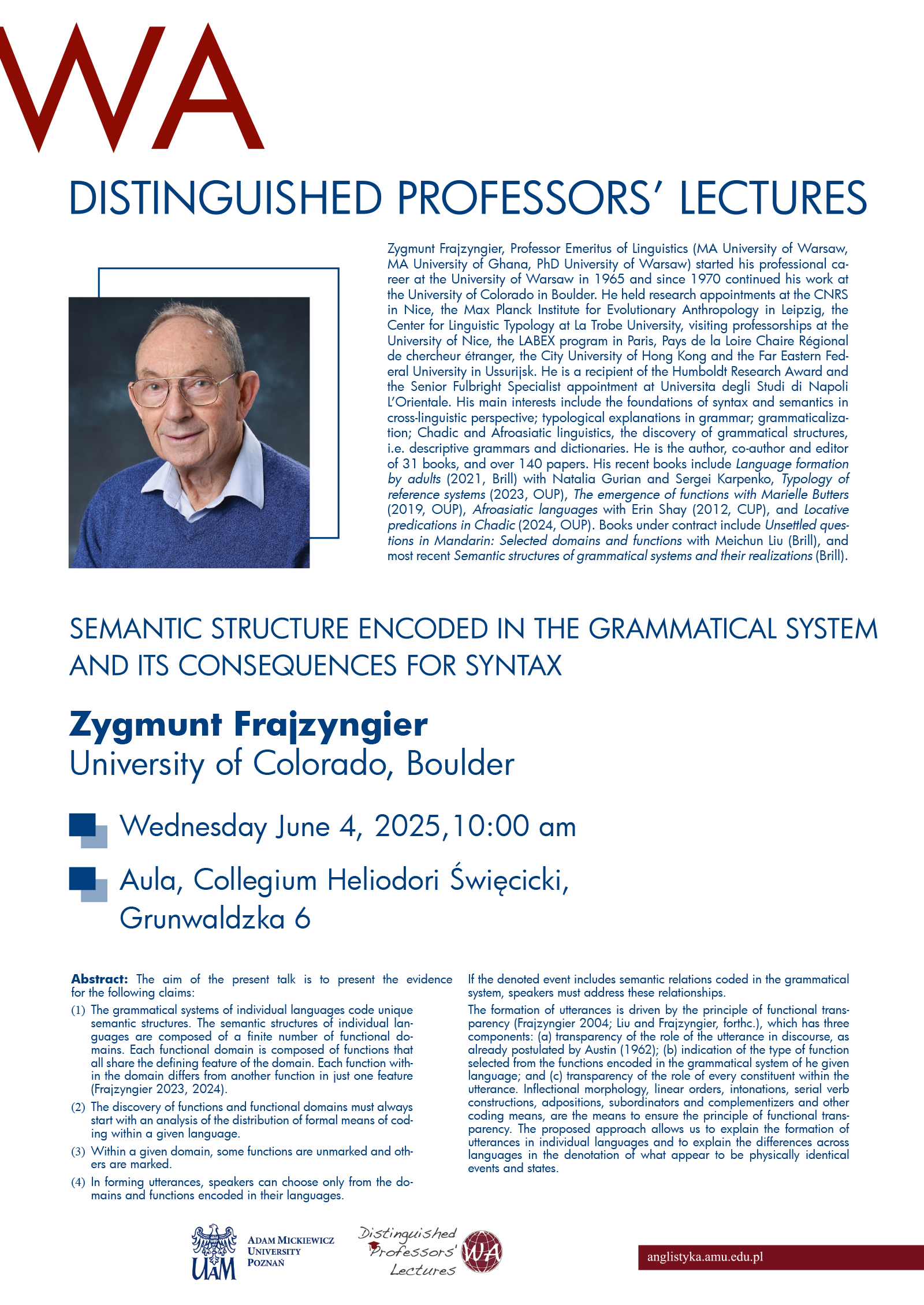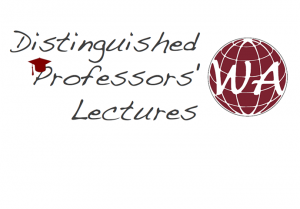Time: Wednesday 4 June 2025 @ 10:00
Venue: Aula, Collegium Heliodori Święcicki, Grunwaldzka 6
Speaker: Prof. Zygmunt Frajzyngier (University of Colorado, Boulder)
Semantic structure encoded in the grammatical system and its consequences for syntax
Abstract
The aim of the present talk is to present the evidence for the following claims:
- The grammatical systems of individual languages code unique semantic structures. The semantic structures of individual languages are composed of a finite number of functional domains. Each functional domain is composed of functions that all share the defining feature of the domain. Each function within the domain differs from another function in just one feature (Frajzyngier 2023, 2024).
- The discovery of functions and functional domains must always start with an analysis of the distribution of formal means of coding within a given language.
- Within a given domain, some functions are unmarked and others are marked.
- In forming utterances, speakers can choose only from the domains and functions encoded in their languages.
- If the denoted event includes semantic relations coded in the grammatical system, speakers must address these relationships.
The formation of utterances is driven by the principle of functional transparency (Frajzyngier 2004; Liu and Frajzyngier, forthc.), which has three components: (a) transparency of the role of the utterance in discourse, as already postulated by Austin (1962); (b) indication of the type of function selected from the functions encoded in the grammatical system of the given language; and (c) transparency of the role of every constituent within the utterance. Inflectional morphology, linear orders, intonations, serial verb constructions, adpositions, subordinators and complementizers and other coding means, are the means to ensure the principle of functional transparency. The proposed approach allows us to explain the formation of utterances in individual languages and to explain the differences across languages in the denotation of what appear to be physically identical events and states.

About the speaker
Zygmunt Frajzyngier, Professor Emeritus of Linguistics (MA University of Warsaw, MA University of Ghana, PhD University of Warsaw) started his professional career at the University of Warsaw in 1965 and since 1970 continued his work at the University of Colorado in Boulder. He held research appointments at the CNRS in Nice, the Max Planck Institute for Evolutionary Anthropology in Leipzig, the Center for Linguistic Typology at La Trobe University, visiting professorships at the University of Nice, the LABEX program in Paris, Pays de la Loire Chaire Régional de chercheur étranger, the City University of Hong Kong and the Far Eastern Federal University in Ussurijsk. He is a recipient of the Humboldt Research Award and the Senior Fulbright Specialist appointment at Universita degli Studi di Napoli L’Orientale. His main interests include the foundations of syntax and semantics in cross-linguistic perspective; typological explanations in grammar; grammaticalization; Chadic and Afroasiatic linguistics, the discovery of grammatical structures, i.e. descriptive grammars and dictionaries. He is the author, co-author and editor of 31 books, and over 140 papers. His recent books include Language formation by adults (2021, Brill) with Natalia Gurian and Sergei Karpenko, Typology of reference systems (2023, OUP), The emergence of functions with Marielle Butters (2019, OUP), Afroasiatic languages with Erin Shay (2012, CUP), and Locative predications in Chadic (2024, OUP). Books under contract include Unsettled questions in Mandarin: Selected domains and functions with Meichun Liu (Brill), and most recent Semantic structures of grammatical systems and their realizations (Brill).
About the lecture series
WA Distinguished Professors’ Lectures Series features internationally renowned scholars visiting the Faculty of English to share their research and professional expertise with the faculty and students.
